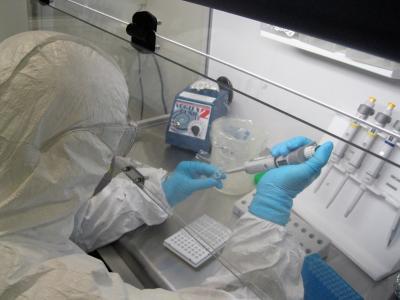Western humans are rare in that we drink milk after weaning. Milk is the staple food for infants and contains the sugar lactose but most mammals lose the ability to digest lactose, and thus milk, as they get older.
The ability to digest the sugar is governed by the production of the enzyme lactase in the small intestine. As children get older, the lactase gene is gradually disabled, which means that no lactase is formed and the lactose enters the colon undigested, where it is typically converted into acids and hydrogen gas and, in many people, causes the painful symptoms of lactose intolerance.
Five populations in Europe, Saudi Arabia and East Africa have developed genetic mutations independently that allow them to produce lactase throughout their entire lives, a condition known as lactase persistence. And that mutation had spread farther and earlier than commonly believed.
By the Middle Ages, Central Europeans were already capable of digesting milk, yogurt and cheese as well as most Europeans and Americans today. Researchers at the University of Zurich's Centre for Evolutionary Medicine have discovered that the population of the medieval town of Dalheim had a similar genetic predisposition for milk digestion to present-day Germans and Austrians.

Analyzing DNA from 1,000-year-old human teeth for genetic adaptations to milk consumption. Credit: Christina Warinner, UZH
Dairy has long been a central feature of European cuisine and cultural identity, and today most of the European population is lactase persistent, which means they can digest milk in adulthood. But earlier studies on DNA samples taken from European farmers of 5,000 BC revealed a low lactase persistence rate.
Lactase persistence was found among farmers in Spain during the Late Neolithic - at around 3,000 BC, 27 percent were lactase persistence - and Scandinavian hunter-gatherers had 5 percent with lactase persistence.
Somewhere between then and now the persistence we still have today occurred.
The latest study from the University of Zurich reveals a 72-percent lactase persistence rate among the population of the medieval town of Dalheim in Germany between 950 and 1,200 AD, which indicates that lactase persistence had already reached modern Central European levels (71 – 80 percent) around 1000 years ago.
These results contradict the previous research conducted on human remains from medieval Hungary, which exhibited a lactase persistence rate of 35 percent compared to 61 percent in the country today. The new study suggests that the evolution of lactase persistence did not follow a single pattern throughout Europe and that genetic lactase persistence may have been common in Central Europe earlier than in Eastern Europe.
"Undoubtedly, a number of factors played a role in the prevalence in different regions, such as different food and migration patterns," explains Christina Warinner, the senior researcher of the study. "Our research reveals that lactase persistence already developed during the Middle Ages in Central Europe but this was clearly not the case everywhere on the continent."
Majority of the global population lactose-intolerant
Nowadays, lactase persistence is so prevalent among Europeans and European-descendent populations in America and Australian that, until very recently, lactose intolerance was considered an abnormality, deficiency or disease.
It was only when dairy products were promoted in national and international food campaigns in the mid-20th century that it became apparent that the majority of the global population is lactose-intolerant. Subsequent research has revealed that lactase persistence is actually the abnormal condition, resulting from the recent evolution of specific genetic mutations in certain populations.





Comments